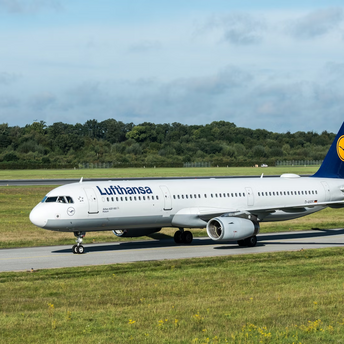Europe’s Most Challenging Hiking Trails: Testing Limits Amidst Stunning Landscapes

For adventurers seeking to push their physical and mental boundaries, Europe’s rugged trails offer an unparalleled experience. Spanning snow-capped peaks, sheer cliffs, and remote wilderness, these challenging hikes demand preparation, resilience, and respect for nature. Here’s a journey through some of Europe’s most demanding hiking trails, where the rewards are as immense as the challenges.
Tour du Mont Blanc, France, Italy, and Switzerland
The Tour du Mont Blanc (TMB) is an iconic long-distance trail that encircles Western Europe’s tallest mountain, Mont Blanc. Covering 170 kilometers and ascending nearly 10,000 meters, the TMB takes hikers through three countries—France, Italy, and Switzerland—offering breathtaking views of glaciers, alpine meadows, and jagged peaks.

While not requiring technical climbing skills, the TMB challenges hikers with its steep ascents, descents, and variable weather. Completing the circuit typically takes 10 to 12 days, though some opt for shorter sections. Along the way, mountain huts provide basic accommodations and a chance to connect with fellow adventurers.
Kungsleden, Sweden: The King’s Trail
The Kungsleden, or "King’s Trail," is a 440-kilometer route through Sweden’s Arctic wilderness. Stretching from Abisko in the north to Hemavan in the south, this trail traverses the remote landscapes of Lapland, passing through birch forests, glacier-fed rivers, and stark tundra.
The Kungsleden is particularly challenging due to its isolation. While some sections are equipped with huts, hikers must often carry their own supplies. In winter, the trail transforms into a demanding ski route, attracting experienced backcountry enthusiasts. The Northern Lights and midnight sun add a mystical dimension to this Arctic adventure.
GR20, Corsica: The Toughest in Europe
Renowned as one of Europe’s most grueling trails, the GR20 runs diagonally across Corsica, covering 180 kilometers of rugged terrain. The trail combines steep climbs, exposed ridges, and rocky paths, often requiring hands-on scrambling.

Spanning from Calenzana in the north to Conca in the south, the GR20 takes about 15 days to complete. The unpredictable Corsican weather adds to the challenge, but hikers are rewarded with awe-inspiring vistas, natural pools, and a deep connection to the island’s wild heart.
Laugavegur Trail, Iceland: A Land of Fire and Ice
While shorter than some on this list, the Laugavegur Trail in Iceland is no less demanding. Covering 55 kilometers, this trail traverses a landscape shaped by volcanic activity, from steaming geothermal vents to ice-capped mountains and multicolored rhyolite hills.
Weather on the Laugavegur is notoriously fickle, with conditions ranging from sunshine to snowstorms even in summer. Hikers often extend their journey to include the Fimmvörðuháls Pass, adding another 25 kilometers of rugged terrain. Camping or staying in mountain huts offers an immersive experience in Iceland’s otherworldly wilderness.
Roche Veyrand via Ferrata, France: A Vertical Adventure
For those seeking a heart-pounding challenge, the Roche Veyrand via ferrata in France offers a vertical thrill. Located in the Chartreuse Mountains, this route involves traversing sheer cliffs using metal rungs, cables, and suspension bridges.

Although technically not a hike, the Roche Veyrand demands physical strength, stamina, and a head for heights. Proper equipment, including a harness and helmet, is essential. The reward is unmatched panoramic views over the French Alps, making it a favorite for adrenaline-seeking adventurers.
Dolomites Alta Via 2, Italy: A High-Alpine Trek
The Alta Via 2 is one of several long-distance trails in Italy’s Dolomites, renowned for their dramatic limestone peaks. Stretching over 160 kilometers from Brixen to Feltre, this high-altitude route challenges hikers with exposed paths, steep ascents, and demanding descents.
Accommodations are available in rifugios (mountain huts), offering hearty meals and a warm place to rest. Completing the Alta Via 2 typically takes two weeks, and the trail’s remote sections require careful planning and confidence in high-alpine conditions.
Hardangervidda, Norway: Nordic Wilderness
The Hardangervidda Plateau in Norway is the largest high-altitude plateau in Europe, offering a challenging trek through remote and often harsh conditions. This vast expanse of tundra, lakes, and mountains demands self-sufficiency, as weather can change rapidly, and trails are less defined.

The Hardangervidda is particularly famous for being part of the route that Roald Amundsen used to train for his Antarctic expeditions. For modern hikers, it provides an opportunity to experience Norway’s raw wilderness while testing their limits.
Tips for Tackling Europe’s Toughest Trails
- Prepare Physically and Mentally: These trails demand fitness and resilience. Train in advance, particularly for elevation gains and long distances.
- Research and Plan Ahead: Understand trail conditions, weather patterns, and required permits. Some routes, like the GR20, require advance bookings for huts.
- Invest in Quality Gear: Durable boots, layered clothing, and proper navigation tools are essential. On via ferrata routes, ensure safety equipment is certified.
- Respect Nature: Follow Leave No Trace principles, respect wildlife, and carry out all waste.



















